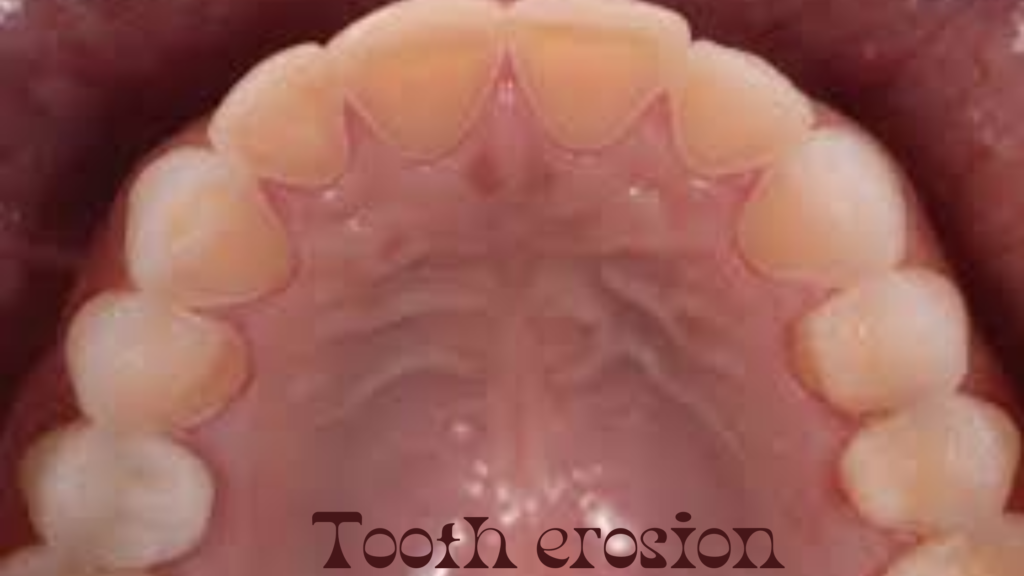Tooth erosion is the loss of tooth enamel caused by acid attack—not from bacteria (as in cavities), but from chemical processes. Unlike decay (caries), erosion is not caused by plaque bacteria but by acidic substances that dissolve the hard surface of the teeth.
🦷 What is Enamel Erosion?
Enamel is the hard, protective outer layer of your teeth. Tooth erosion occurs when acids wear down this enamel over time, exposing the softer dentin underneath.
🔍 Causes of Tooth Erosion
- Dietary Acids
- Soft drinks (especially carbonated ones)
- Fruit juices (especially citrus)
- Vinegar and acidic foods
- Stomach Acid Exposure
- Gastroesophageal reflux disease (GERD)
- Frequent vomiting (e.g., bulimia, morning sickness)
- Dry Mouth (Xerostomia)
- Less saliva means less neutralization of acid
- Environmental/Occupational
- Exposure to acidic fumes (e.g., battery factory workers, swimmers in chlorinated pools)
⚠️ Signs & Symptoms
- Tooth sensitivity (especially to hot, cold, sweet, or acidic foods)
- Smooth, shiny tooth surfaces
- Yellowing of teeth (exposed dentin)
- Rounded or cupped areas on chewing surfaces
- Increased risk of chips or cracks
- Thinning or transparency at the edges of front teeth
🛡️ Prevention
- Limit acidic foods and drinks
- Drink water after consuming acids
- Use a straw to minimize contact with teeth
- Wait 30 minutes before brushing after acidic meals
- Use fluoride toothpaste and possibly prescription fluoride treatments
- Chew sugar-free gum to stimulate saliva flow
- Treat underlying conditions (e.g., GERD, eating disorders)
🛠️ Treatment
- Remineralization therapy: Fluoride and calcium-phosphate products
- Desensitizing toothpaste: To manage sensitivity
- Bonding or sealants: To protect exposed dentin
- Crowns or veneers: For severe cases to restore form and function
🔄 Can Erosion Be Reversed?
- Early-stage erosion can be managed and halted with remineralization.
- Advanced erosion is irreversible and requires restorative dental treatment.
